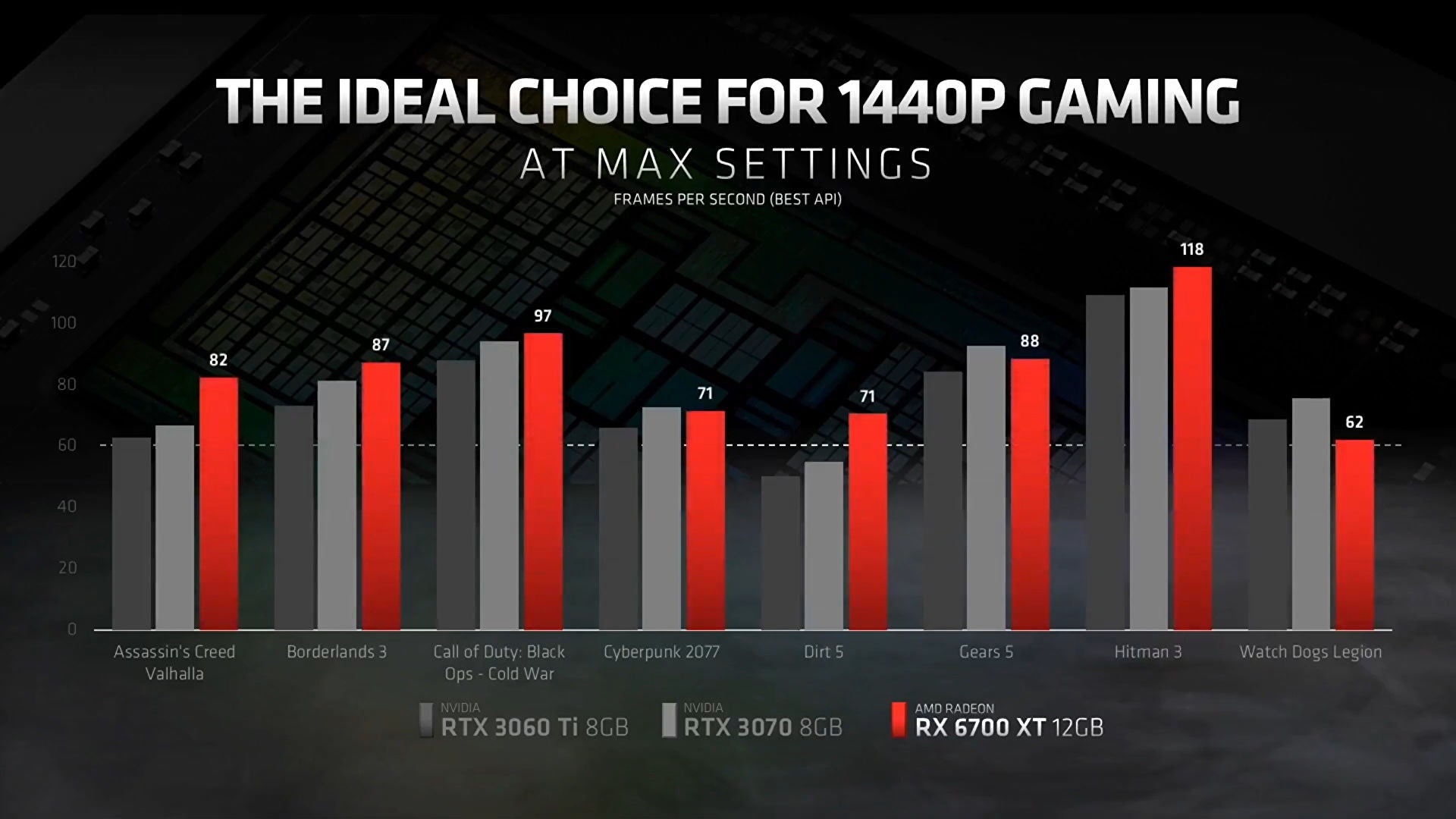This is a 40 compute unit design, meaning this card has half the CUs of the flagship RX 6900 XT, but the card is driven at a higher frequency. Looking at the rest of the specs, the new graphics card has a smaller Infinity Cache than its bigger Big Navi predecessors, with 96MB here compared to 128MB on the other cards; likewise the total VRAM count here is 12GB versus 16GB. This is due to the 192-bit bus; each 32-bit channel of that bus that access 1 or 2GB of memory, so AMD could only realistically choose between 6GB and 12GB with this design.
Given the target on 1440p gaming, I think the 12GB allocation makes sense - and provides a marketing win over Nvidia, whose 3060 Ti and 3070 ship with only 8GB of RAM. AMD highlighted a few games that require over 8GB at 1440p max settings, so it’ll be interesting to see whether the RAM advantage is impactful once we begin benchmarking!
The company announced that both reference and custom models would be available from launch on March 18th. The reference model has a very similar look to previous RX 6000-series designs, with a dual axial fan design, HDMI 2.1 and DisplayPort 1.4 outputs and a metal shroud. Twin power inputs, 6-pin and 8-pin, are required on the reference model as well as a suggest PSU capacity of 650W, but expect custom designs to have varying power requirements.
Towards the end of their brief presentation, AMD also teased that RX 6000-series laptops are also coming soon. It’ll be fascinating to see how their performance compares to Nvidia’s latest efforts, which attracted some flack recently when Nvidia chose to discontinue its Max-P and Max-Q naming scheme, leading to a situation where one ‘RTX 3080’ laptop GPU could provide around 20 per cent more performance than another due to differing power targets.
You can watch the full presentation below to see the event in its full glory - and with a 20-minute runtime, it won’t take long to scrub through either!
What do you think of AMD’s announcements? Let us know in the comments below.


